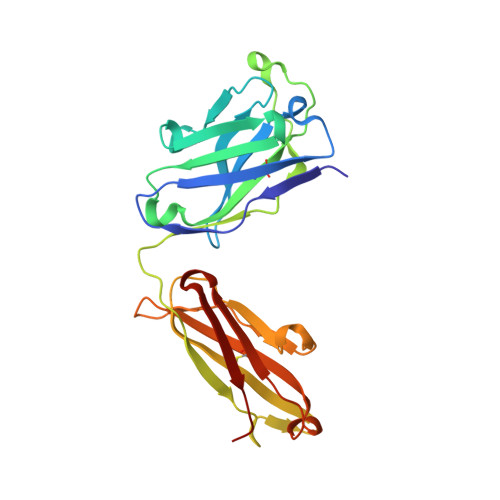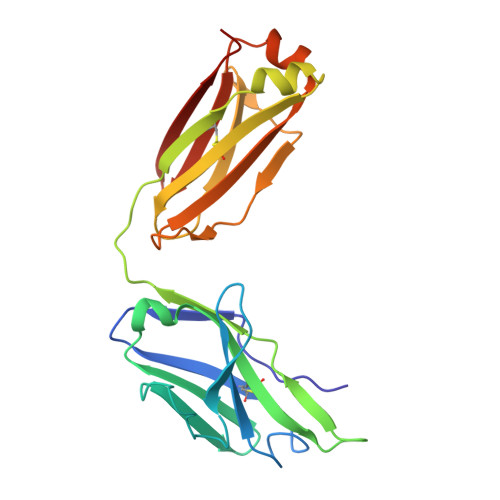Broadly neutralizing antibodies targeting a conserved silent face of spike RBD resist extreme SARS-CoV-2 antigenic drift.
Song, G., Yuan, M., Liu, H., Capozzola, T., Lin, R.N., Torres, J.L., He, W.T., Musharrafieh, R., Dueker, K., Zhou, P., Callaghan, S., Mishra, N., Yong, P., Anzanello, F., Avillion, G., Vo, A.L., Li, X., Makhdoomi, M., Feng, Z., Zhu, X., Peng, L., Nemazee, D., Safonova, Y., Briney, B., Ward, A.B., Burton, D.R., Wilson, I.A., Andrabi, R.(2023) bioRxiv
- PubMed: 37162858
- DOI: https://doi.org/10.1101/2023.04.26.538488
- Primary Citation of Related Structures:
8SDF, 8SDG, 8SDH - PubMed Abstract:
Developing broad coronavirus vaccines requires identifying and understanding the molecular basis of broadly neutralizing antibody (bnAb) spike sites. In our previous work, we identified sarbecovirus spike RBD group 1 and 2 bnAbs. We have now shown that many of these bnAbs can still neutralize highly mutated SARS-CoV-2 variants, including the XBB.1.5. Structural studies revealed that group 1 bnAbs use recurrent germline-encoded CDRH3 features to interact with a conserved RBD region that overlaps with class 4 bnAb site. Group 2 bnAbs recognize a less well-characterized "site V" on the RBD and destabilize spike trimer. The site V has remained largely unchanged in SARS-CoV-2 variants and is highly conserved across diverse sarbecoviruses, making it a promising target for broad coronavirus vaccine development. Our findings suggest that targeted vaccine strategies may be needed to induce effective B cell responses to escape resistant subdominant spike RBD bnAb sites.
Organizational Affiliation:
Department of Immunology and Microbiology, The Scripps Research Institute, La Jolla, CA 92037, USA.



















